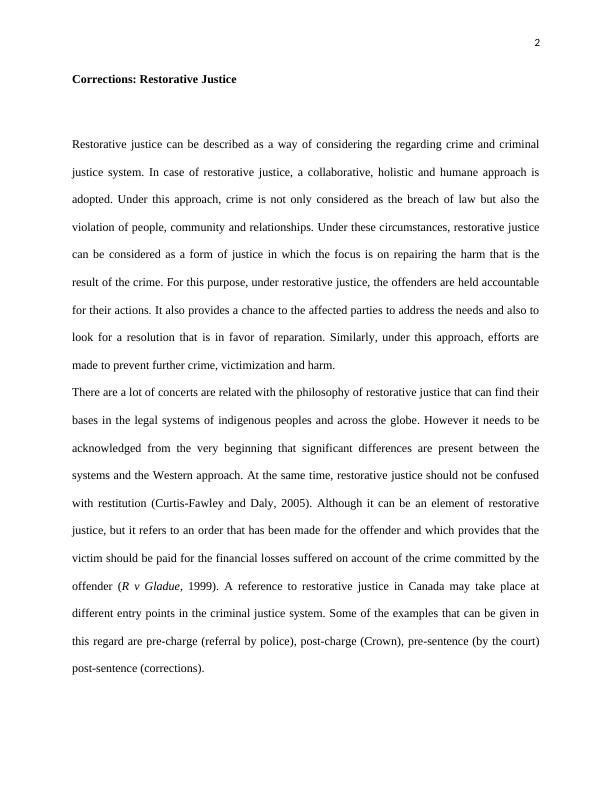Restorative Justice: A Collaborative and Humane Approach to Crime
5 Pages1084 Words295 Views
Added on 2023-06-03
About This Document
Restorative justice is a collaborative, holistic, and humane approach to crime that focuses on repairing harm and preventing further victimization. It can take several forms, including victim-offender reconciliation programs, conferencing, and victim impact panels. However, different initiatives related to restorative justice will vary in each community and on the basis of particular cases. The rise in the use of restorative justice has presented opportunities as well as challenges for victims and survivors.
Restorative Justice: A Collaborative and Humane Approach to Crime
Added on 2023-06-03
ShareRelated Documents
End of preview
Want to access all the pages? Upload your documents or become a member.
Restorative Justice: Repairing Societal Harm and Promoting Accountability
|8
|2363
|304
Restorative Justice Programs in Victoria and New South Wales
|6
|1618
|67
Restorative Justice Conferencing in Australian Criminal Justice System
|7
|1793
|318
Restorative Justice: A Process of Healing and Accountability
|11
|3304
|414
Restorative Criminal Justice System: Key Issues and Impacts
|4
|944
|366
Correction Practices in Criminal Law
|5
|1535
|52


